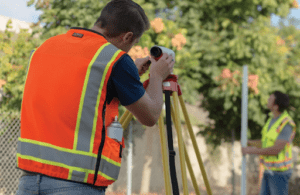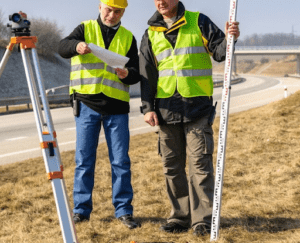
If you look at anyone who works on construction sites or is working on the side of the road you will see them wearing a bright safety vest. What you may not know though is that there are different types of safety vests and depending on the environment you’re working in, the standard requirements for the type of vest you wear will change.
What are safety vests?
Safety vests are important pieces of clothing that’s main purpose is to make the user easily visible both during the day and at night. Most safety vests are either lime green or bright orange and have varying amounts of reflective tape. The amounts of required reflective tape vary depending on how close to traffic the workers are and how fast that traffic is going in this area. For example, workers who are doing a job in a small town where traffic won’t be going over 25 mph will only need a class 1 vest; on the other hand, for a worker who is doing construction on part of a highway they will need a class 3 safety vest.
What are the differences between the different vest classes?
When purchasing a safety vest, there are three different types of vests to choose from which are classified into classes 1, 2, and 3.
Class 1 vests are the vest with the least amount of reflective tape on it thus meaning that they are used in the least dangerous areas. This includes spaces where the workers will be distanced from traffic or in areas where the traffic doesn’t go faster than 25 mph. Class 1 vests have to contain a minimum requirement of 155 square inches of reflective tape on them, with one stripe going completely around the middle and the others over each shoulder.
When workers are required to use class 2 vests, it likely means that they are working closer to the traffic which may be going 25 mph or faster.

It is also required if you will be doing work in areas where there is limited visibility, such as in a forest or in an area where the weather makes it hard to see. As for the required amount of reflective tape, class 2 vests need to have 201 square inches of reflective tape which will go in either one or two stripes that will encircle the middle of the vest and stripes over the shoulders.
The final class of vest there is, is the class 3. Class 3 vests are the type of vests that you would use in the event that you were doing work near traffic that could be going 50 mph or more. This vest is also very important as many of those who are required to wear it are working very close to traffic, in areas such as highways. With this in mind, it is easy to understand why it is required to have 310 square inches of reflective tape which is 12.92 feet and 2-inches wide. The worker is also required to have reflective material on their arms and legs, making it easy to be seen by any passing by traffic. The total amount of background fabric that they need is 1240 square inch minimum.
For surveyors, class 2 vests are the most commonly used. Most surveyors are not right next to fast oncoming traffic and usually either working around construction sites or on someone’s property.
Are there any other differences between safety vests?
Other than the different types of vest classes, there are different accessories that some vests have over others. For example, the amount of pockets available to store a variety of tools varies per vest model. If you don’t carry around many items that you need to store, then you can save by purchasing a vest without pockets. This is completely up to your personal preferences. The main other difference is the fabric which the vest is made up of. Some of the types of fabrics that you could find in many vests are polyester, mesh, and cloth.
Depending on a mixture of your personal preferences and what is required for your work environment, you can easily narrow down which vest fits your needs the best.
To see SiteSurv’s full collection of Surveyor Vests and other safety equipment, click on the links below.

